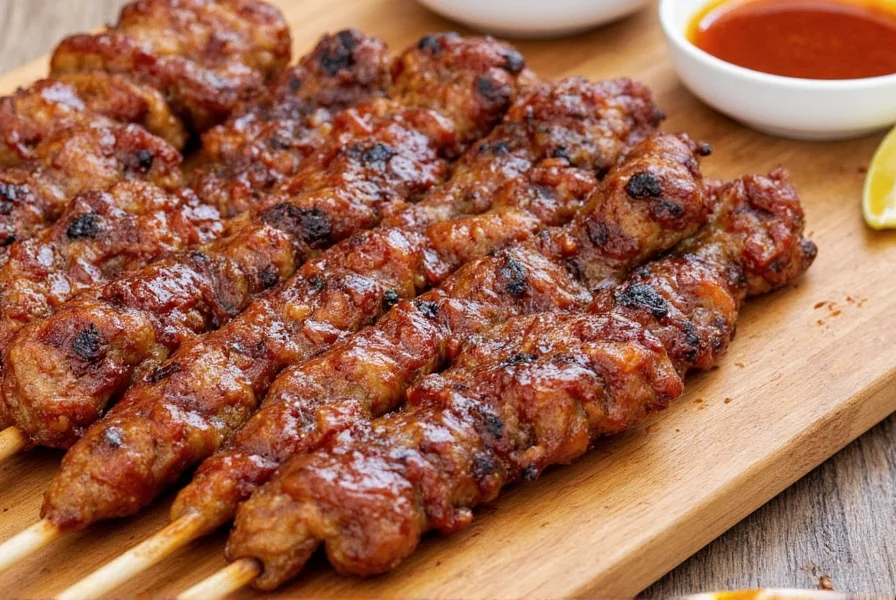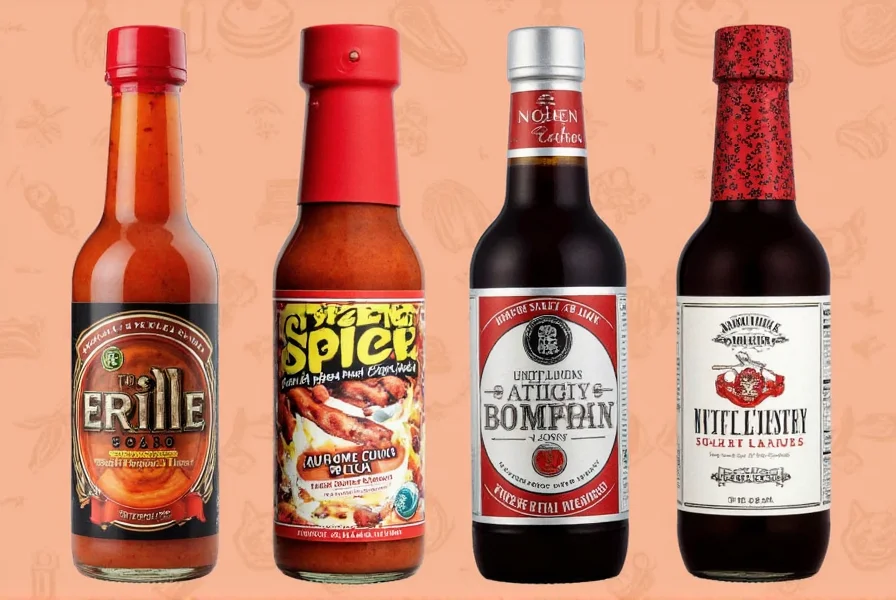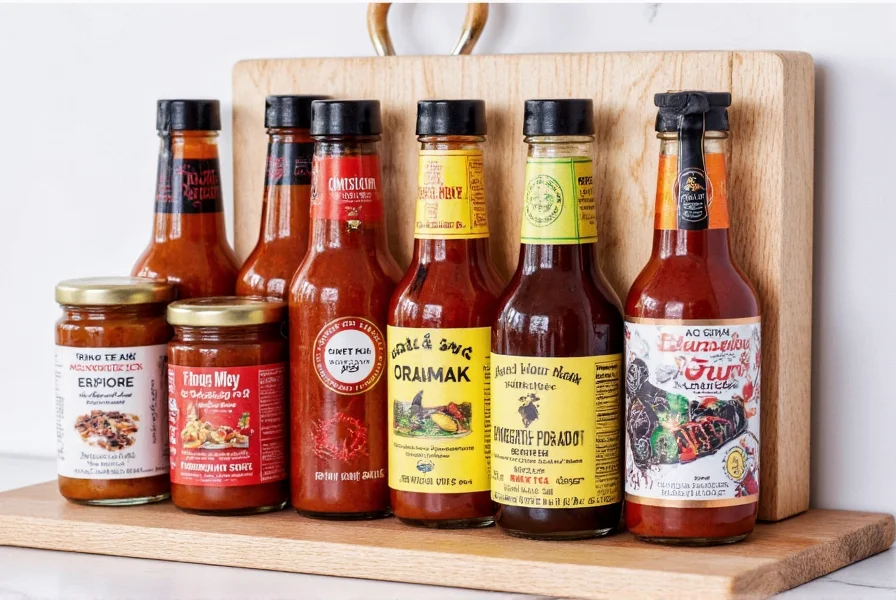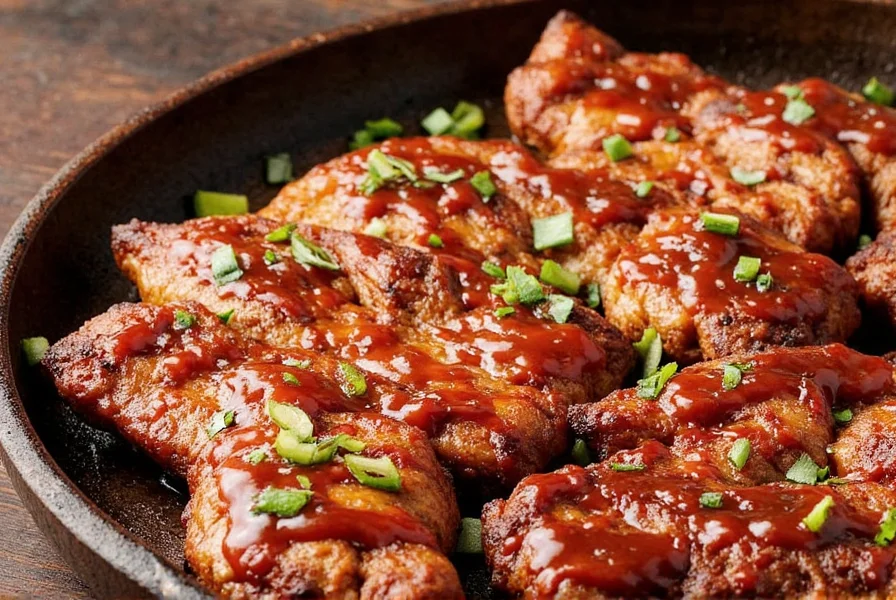Sizzle & Spice: 7 Must-Know Korean Barbecue Sauces That Will Ignite Your Grill Game!
Table of Contents
- Introduction: The Soul of Korean BBQ
- Sauce Spotlight: Profiles & Flavors
- How to Use Korean Barbecue Sauce Like a Pro
- Buying Guide: Picking the Perfect Sauce
- Comparison Table: Top 7 Korean Barbecue Sauces
- Pairings & Serving Suggestions
- DIY Alert: Make Your Own Korean BBQ Sauce at Home
- Conclusion: Elevate Every Bite
Introduction: The Soul of Korean BBQ
If you've ever stood near a sizzling grill at a Korean BBQ joint and watched thin slices of marinated meat curl up and glisten with sauce as they cook, then you know that Korean barbecue sauce is more than just a condiment — it's a lifestyle.

The secret behind those addictive flavors lies in the sauce — a complex blend of sweet, savory, spicy, and umami-rich ingredients that elevate even the simplest cuts of meat into something unforgettable. Whether you're a home cook looking to replicate that authentic Korean street food vibe or a professional chef aiming to add depth to your menu, understanding the nuances of Korean barbecue sauce can be a game-changer.
In this article, we’ll explore the different types of Korean barbecue sauces, compare the best store-bought options, and share some pro tips to help you make the most of them. Plus, we’ll walk you through a simple homemade recipe for when you’re feeling adventurous!
Sauce Spotlight: Profiles & Flavors
Korean barbecue sauce isn’t just one thing. There are several variations, each with its own unique flavor profile, texture, and usage. Let’s dive into the most popular ones:
- Gochujang-based sauces: Rich, fermented, and packed with umami. They often have a deep red color and a slightly smoky flavor.
- Doenjang-based sauces: Less common but increasingly popular among health-conscious diners. They offer a nutty, earthy taste with less sugar.
- Galbi (or Bulgogi) sauce: Sweet and soy-forward, ideal for marinades. Typically includes sesame oil, garlic, and brown sugar.
- Spicy gochugaru-infused sauces: For heat lovers! These use dried chili flakes to bring the fire without overwhelming the sweetness.

Taste Test: What Sets Them Apart?
Understanding what each sauce brings to the table (literally!) helps you match them with the right meats and side dishes. Here’s a quick breakdown:
- Sweetness: Look for brown sugar or honey content if you prefer a caramelized crust.
- Umami: Check for fermented ingredients like gochujang or fish sauce for that savory depth.
- Heat Level: Mild to extra spicy — always check the label or look for “spicy” in the name.
- Thickness: Thicker sauces stick better to grilled meats, while thinner ones work well as dipping sauces.
How to Use Korean Barbecue Sauce Like a Pro
Here’s where the magic happens. Korean barbecue sauce can be used in three main ways:
- MARINADE: Coat your meat (usually beef, pork, or chicken) in the sauce before grilling. This infuses the protein with flavor from the inside out.
- GRILL SAUCE: Brush the sauce onto the meat while it cooks. Be careful — many sauces contain sugar and can burn easily, so apply towards the end of cooking.
- DIPPING SAUCE: Serve a small bowl alongside grilled meat, lettuce wraps, or rice cakes for added flavor.
Pro Tip:
To avoid burning, mix half sauce and half water or oil to dilute it slightly. This creates a smoother glaze without charring.
Buying Guide: Picking the Perfect Sauce
Shopping for Korean barbecue sauce can feel overwhelming with so many options lining grocery store shelves and online marketplaces. To make it easier, here's a breakdown of what to look for based on your needs:
For Beginners:
- CJ Prima Galbi Sauce: Balanced sweetness and soy notes, easy to find, and budget-friendly.
- Pai Chu Korean BBQ Sauce: Versatile for both marinating and dipping, mild spice level.
For Flavor Purists:
- Myung Ga Original Gochujang BBQ Sauce: Fermented base with rich umami and natural sugars.
- Hansikgwan Premium Gochujang BBQ Sauce: Artisanal quality, complex flavor layers.
For Heat Lovers:
- O’Food Spicy Korean BBQ Sauce: Infused with gochugaru, great kick without overpowering sweetness.
- Korean Way Spicy Blend: Bold and fiery — not for the faint-hearted.
For Health-Conscious Eaters:
- Johanna Doenjang BBQ Sauce: Lower sugar, high protein, excellent for clean-eating lifestyles.
- Natural Nara Organic Gochujang BBQ: USDA-certified organic, no artificial additives.
Comparison Table: Top 7 Korean Barbecue Sauces
| Product Name | Flavor Profile | Best For | Heat Level | Recommended Use |
|---|---|---|---|---|
| CJ Prima Galbi Sauce | Sweet, Soy-Forward | Beginners | Low | Marinating & Dipping |
| Pai Chu Korean BBQ Sauce | Universal Flavor | Everyday Use | Mild | Grilling & Tacos |
| Myung Ga Gochujang BBQ | Rich Umami, Slightly Sweet | Authentic Flavor Seekers | Low | Glazing & Marinade |
| Hansikgwan Premium Gochujang | Deep Fermented Notes | Chef-Level Cooking | Low | Special Occasions |
| O’Food Spicy Korean BBQ | Spicy & Smoky | Heat Lovers | High | Skewers & Stir-Fries |
| Korean Way Spicy Blend | Fiery, Complex | Adventure Seekers | Extra Hot | Glazing & Dipping |
| Johanna Doenjang BBQ | Nutty, Earthy | Health-Conscious Eaters | Low | Lean Meats & Veggies |

Pairings & Serving Suggestions
Korean barbecue sauce doesn’t live in isolation. It shines brightest when paired thoughtfully. Here are some winning combinations:
- With Meat: Try galbi sauce with thinly sliced ribeye or brisket. Use gochujang-based sauces with fatty cuts like pork belly for a beautiful balance.
- With Veggies: Brush grilled mushrooms, zucchini, or eggplant with doenjang sauce for an umami-packed vegan option.
- As a Dipping Sauce: Mix with mayo or sriracha for a creamy, spicy dip. Goes great with fries, spring rolls, or dumplings!
DIY Alert: Make Your Own Korean BBQ Sauce at Home
Want total control over flavor, salt, and spice? Go DIY! Here's a simple recipe to get you started:
Classic Homemade Korean BBQ Sauce Recipe
- 4 tbsp soy sauce
- 2 tbsp brown sugar
- 1 tbsp gochujang paste
- 1 tsp sesame oil
- 1 clove minced garlic
- ½ tsp grated ginger
- 1 tbsp rice vinegar (optional for tang)
Mix all ingredients in a bowl until smooth. Adjust sweetness or spice to taste. Store in the fridge for up to 2 weeks.

Conclusion: Elevate Every Bite
Korean barbecue sauce is more than just a topping — it’s the heart of a global culinary movement. From the bustling markets of Seoul to your backyard grill, this flavorful staple continues to win fans worldwide.
Whether you're grilling for a party, meal-prepping for the week, or experimenting with new flavors, choosing the right Korean barbecue sauce can transform your cooking experience. With this guide in hand, you’re ready to pick the perfect bottle, use it like a pro, and maybe even whip up your own batch at home.
So grab your tongs, crank up the heat, and let the flavors speak for themselves. Because once you’ve tasted real Korean barbecue sauce, there’s no going back.











 浙公网安备
33010002000092号
浙公网安备
33010002000092号 浙B2-20120091-4
浙B2-20120091-4